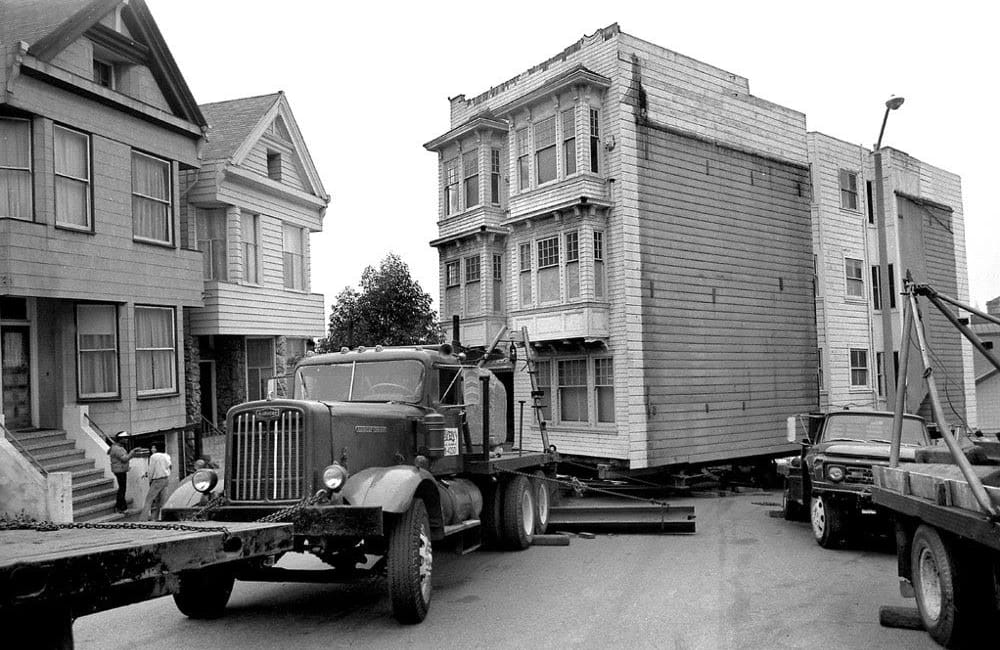
Rare and detailed Victorian homes are synonymous with San Francisco. When you pass one of these houses on the street, it’s natural to assume they’ve sat on the same piece of land since their construction. But some have made onerous journeys to be where they are today, including 12 homes in the Fillmore District that were rescued from certain demolition under the Western Addition redevelopment plan. More than 2,500 other Victorians in the neighborhood were not so lucky.
By the late 1940s, invigorated by nationwide postwar efforts to modernize America’s cities, San Francisco set its sights on “improving” the Western Addition — code for pushing out Black residents from the area to make room for white families. Dating back as early as 1880, many parts of San Francisco barred Black people from owning — and sometimes even renting — homes under racial covenants and deed restrictions. Decades of this exclusion led to a concentrated majority of San Francisco’s Black and Japanese populations in the Western Addition neighborhood, where they were able to find exemptions. This led to a cultural renaissance in the Fillmore during the first half of the 20th century, with jazz clubs springing up across the neighborhood.
In 1948, the city formed the San Francisco Redevelopment Agency, identifying hundreds of square blocks in the Western Addition as a top priority for “slum clearance.” By the 1950s, thousands of mostly Black and Japanese residents were evicted, and the city began demolishing their homes.
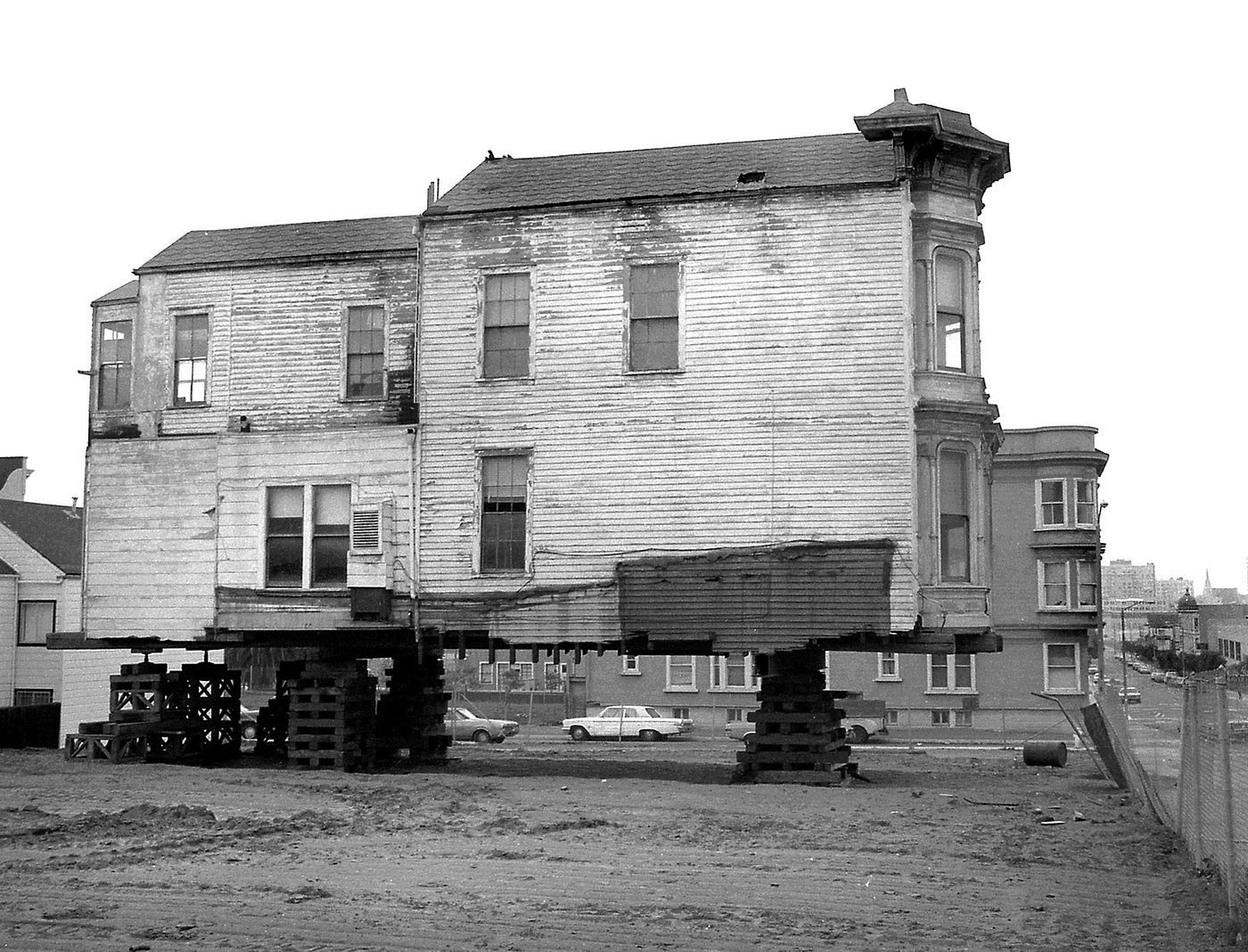
Sign up for The Bold Italic newsletter to get the best of the Bay Area in your inbox every week.
When the agency announced a second phase of demolition in 1964, it was met with public outcry. In response, it added a program to preserve the Victorians west of Fillmore Street; in 1971, San Francisco Heritage was formed. Working together, SF Heritage and the SF Redevelopment Agency identified 12 Victorians to preserve (out of thousands), and the SF Redevelopment Agency agreed to save them if they could be sold and moved. The following year, SF Heritage bought all 12 buildings at public auction for the minimum bidding price of $500 and found new homeowners willing to restore and preserve the Victorians’ character.
Every weekend for three weeks in November 1974, city planners moved four buildings from the block that currently houses Opera Plaza. Some moved to Beideman Place, just a short distance away, and entered the National Register of Historic Places.



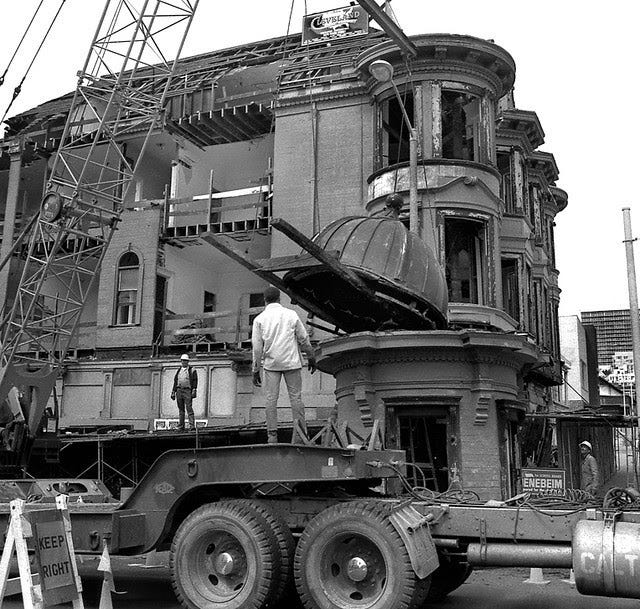
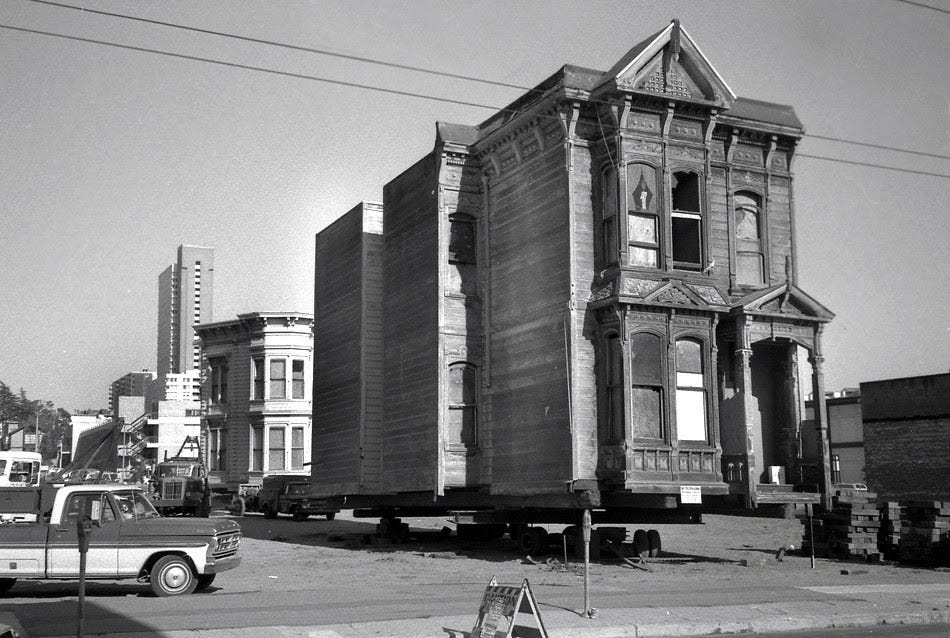
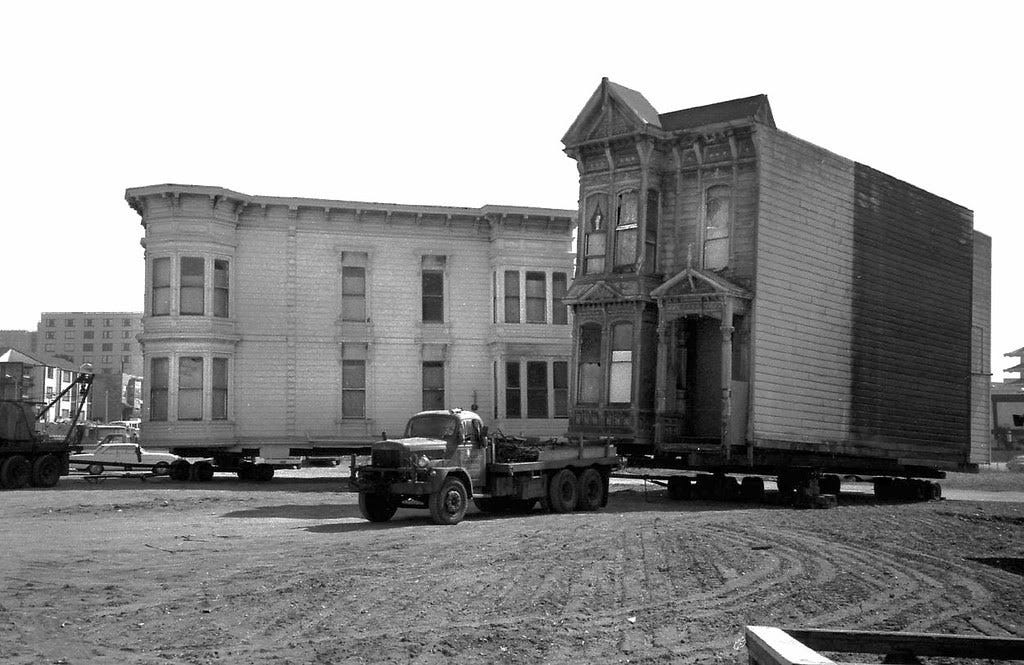
While he was growing up in the Fillmore District in the 1970s, photographer Dave Glass witnessed the herculean relocation of these 12 houses and was inspired to document their transport and restoration.
One well-known relocated building housed Jimbo’s Bop City, one of the Fillmore’s most popular jazz clubs, at 1623 Post Street until it was moved to its current location on Fillmore near Sutter. At the building’s current location, you can visit Marcus Books, the oldest specialty bookstore in the country for African American literature, history, and culture.
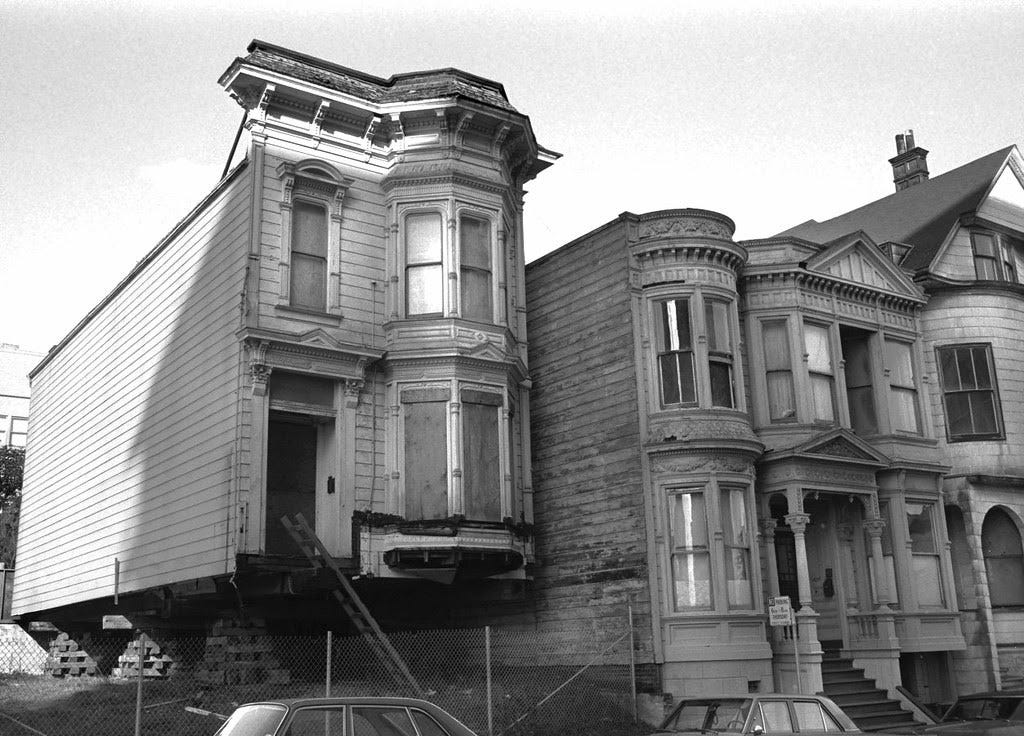
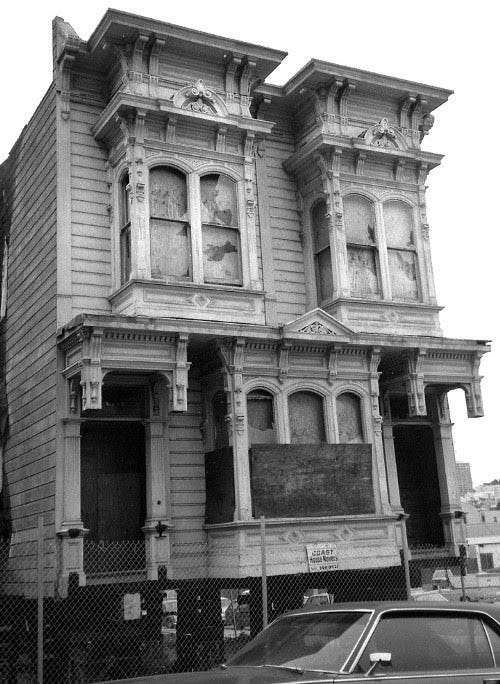
Logistically speaking, relocating these houses was a gigantic operation. Trucks and workers on hand were responsible for removing streetlights and diverting electrical lines. Even though most of the houses traveled only approximately one mile to their ultimate destinations, navigating an entire building through San Francisco is no easy feat.
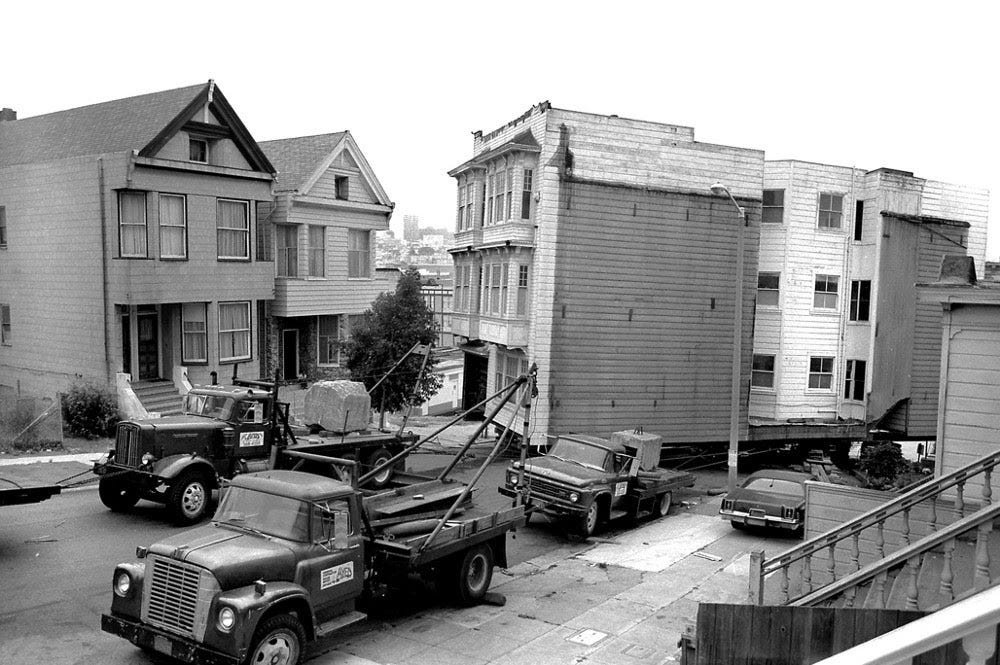


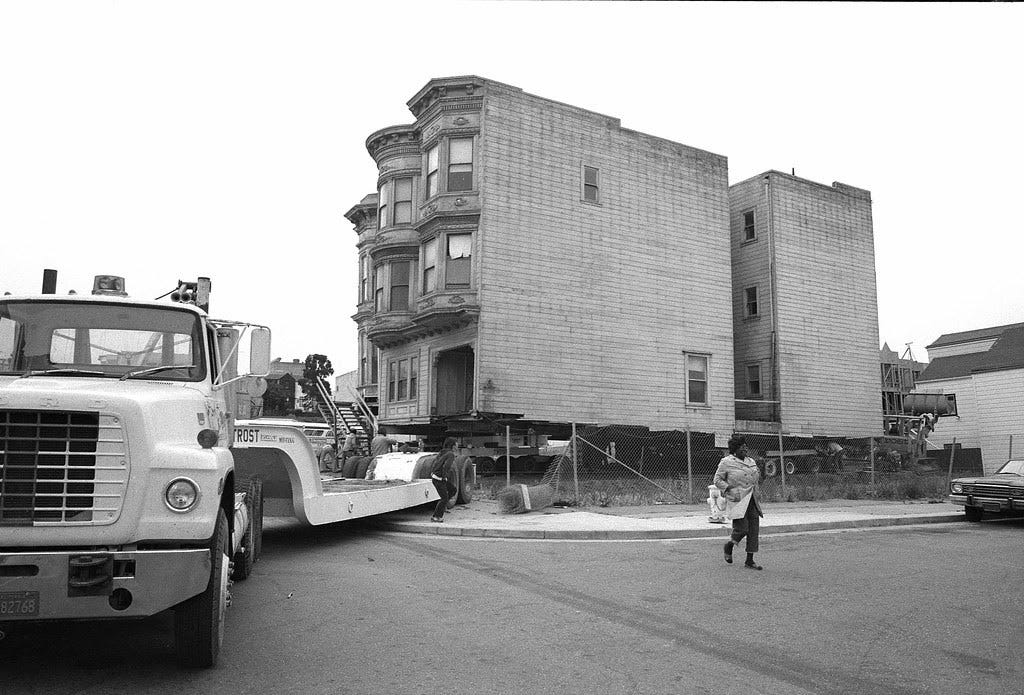
The houses were sold mostly to white upper-middle-class people, and although the homes may have been saved, there was resentment among the Fillmore’s displaced Black residents. The San Francisco Redevelopment Agency ended its decades-long “urban renewal” project in January 2009. The Fillmore District cultural hub that was the “Harlem of the West” had been all but snuffed out — hundreds of Black-owned businesses were forced to close and thousands of families were forced to relocate over that time. Rev. Amos Brown, head of the San Francisco chapter of the NAACP, told SFGate, “They wiped out our community, weakened our institutional base, and never carried out their promise to bring people back.”
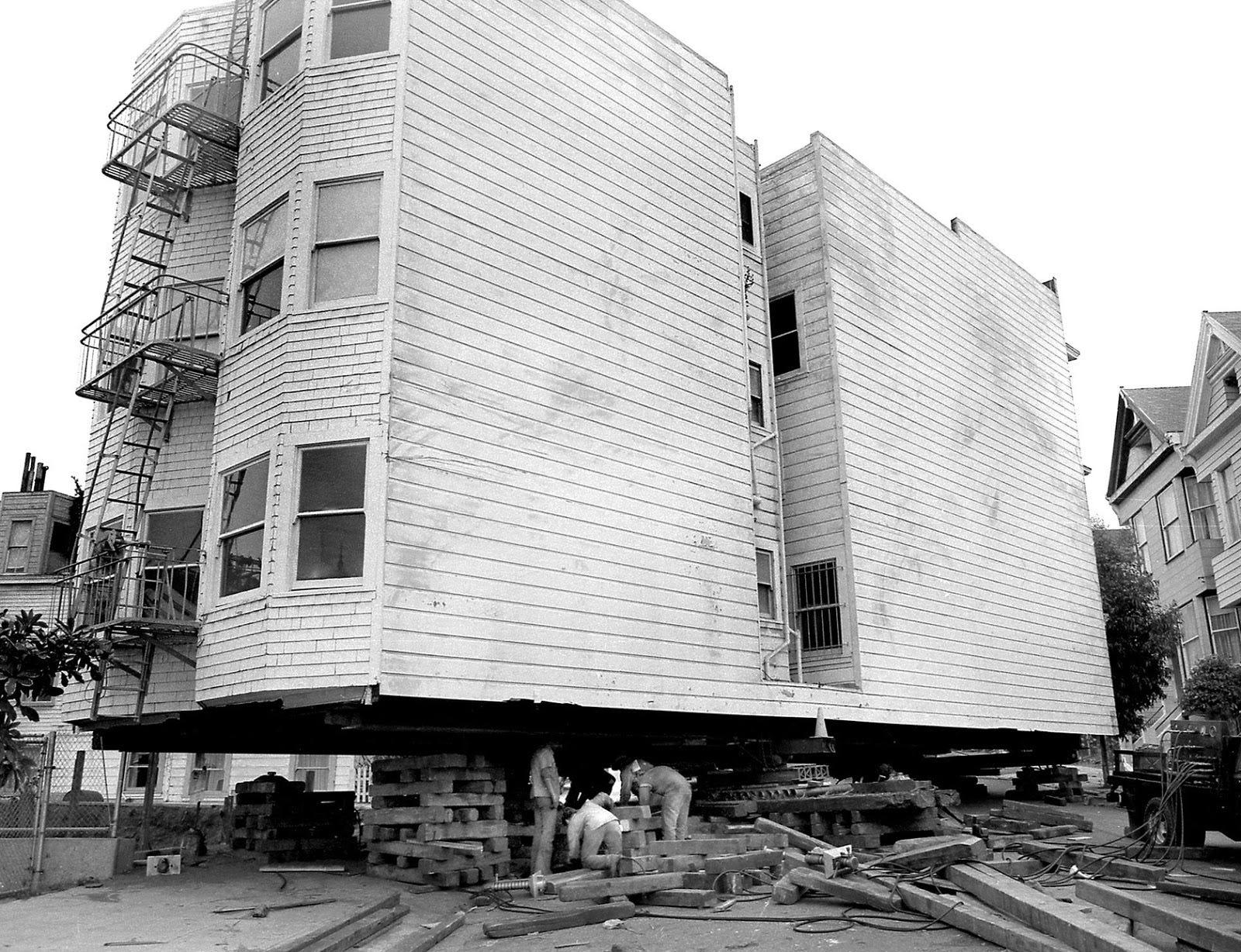

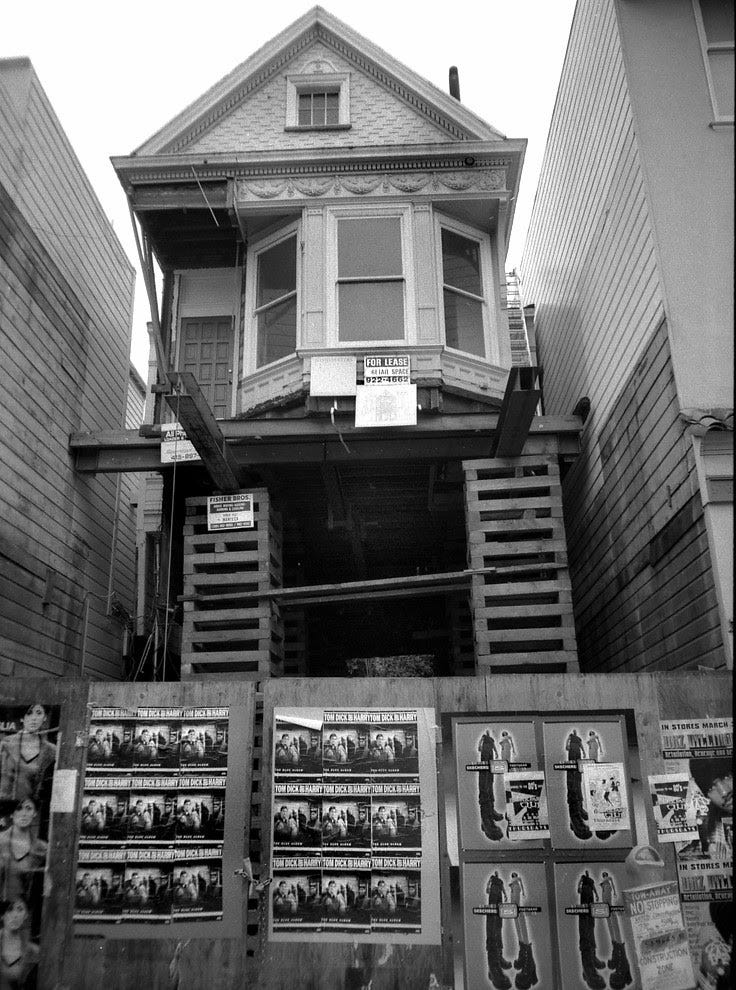

Last June, at the height of the Black Lives Matter protests, the San Francisco Planning Commission passed a resolution to focus the Planning Department’s work and resources on “racial and social equity” and apologized for the damage done to the Western Addition and its displaced residents. The impassioned determinism from the commission and constituents alike will, hopefully, ensure that San Francisco’s past mistakes are not repeated.



